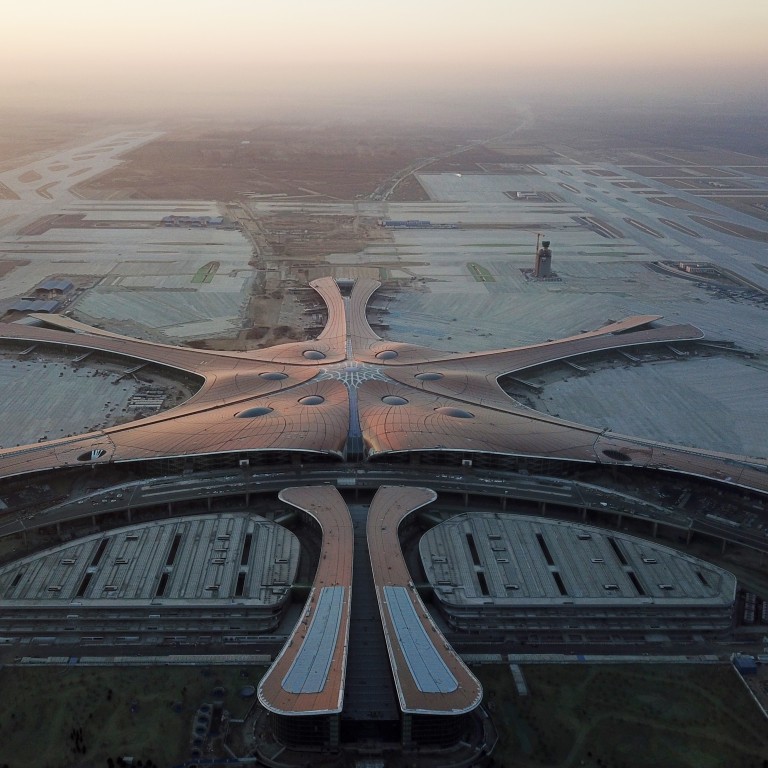
Beijing’s new 7-runway, star-shaped Daxing airport opened by Xi Jinping, with aviation industry ready for take-off
- Most expensive airport in history is housed in the world’s biggest single-terminal building
- Daxing is the first airport to have two-storey departure gates and is hailed as a major boost for China’s air travel
Having taken five years and more than 80 billion yuan (US$11 billion) to complete, Daxing International Airport was declared open in a short announcement by Xi on Wednesday, six days before the October 1 National Day holiday.
The world’s biggest single-terminal airport building, at 7.53 million sq ft, it has a distinctive star-shaped layout and is the first airport to have two-storey departure gates, to increase capacity.
Chinese authorities hope Daxing will become one of the world’s busiest international transport hubs, eventually handling more than 100 million passengers a year and being a hub for the country’s rapidly growing civil aviation market.
State media hailed the Zaha Hadid-designed airport as an architectural marvel. Despite its size, the single-terminal design meant passengers would be able to transfer to domestic or international flights in as little as 45 minutes, Kong Yue, the airport’s deputy general manager, told The Beijing News.
What we know about the hi-tech features at Beijing’s new mega airport
A plan published in January by the Civil Aviation Administration of China showed that China Eastern and China Southern would relocate their flights to the new airport.
An airport express train will transport passengers to Beijing in under 20 minutes at speeds of up to 160km/h (99mph), making it the fastest subway in China. It is intended that it will eventually be connected to the nationwide high-speed railway network.
Among the ceremony’s several hundred attendees were vice-premiers Han Zheng and Liu He, as well as Civil Aviation Administration director Feng Zhenglin, Hebei party chief Wang Dongfeng, and Cai Qi, the Communist Party secretary for Beijing.
“Xi Jinping attaches particular importance to and has personally encouraged the development of Daxing International Airport, a major engineering project that is symbolic of the capital,” Han said in a speech at the event.
“It will significantly improve the global competitiveness of national airlines, promote our country’s continued opening up to the wider world, and ease pressure on Beijing’s facilities.”
The Beijing government is working with neighbouring Hebei province to develop the wider area surrounding the airport as an “airport economic zone”, which will also include some southern districts of the capital. The government hopes the new zone will be a hi-tech hub for industries such as electronics manufacturing and logistics.
China’s top guns pilot first flights from Beijing Daxing airport
Hebei is also where China plans to build a new hi-tech innovation metropolis to alleviate overcrowding in Beijing – an ambitious megaproject personally led by Xi.
If completed, Xiongan New Area would be the largest infrastructure project in the history of modern China, but it too has been labelled controversial by domestic urban planning, environmental and economic experts.

